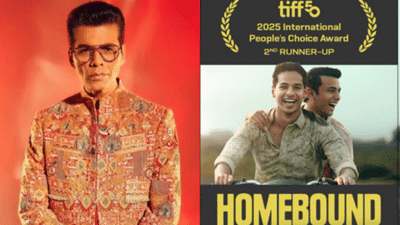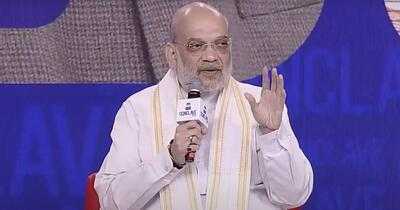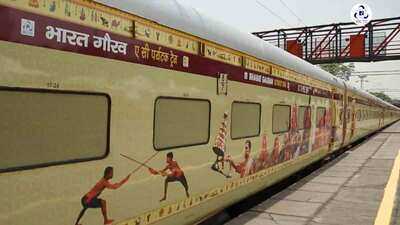
The concept of Lahori Zeera took shape quite naturally for Saurabh Munjal and his cousins, Nikhil Doda and Saurabh Bhutna. “One day, Nikhil, who has exceptional culinary skills, dashed a few simple home ingredients to create a refreshing beverage. The taste immediately clicked, and we felt it had potential beyond just a home-made experiment,” shares Munjal, Co-founder and CEO of Archian Foods, the parent brand of Lahori Zeera.
The idea evolved organically during their frequent brainstorming sessions on potential business opportunities. However, one concern kept resurfacing: how could a local brand possibly compete with global beverage giants? Munjal remembers that it was only through deeper research that they uncovered an intriguing insight—in many markets, from the US to Asia-Pacific, it wasn’t always Coke and Pepsi leading the pack; most of the time, it was local beverage brands that claimed the top spot.
“This insight strengthened our conviction. We began by making small batches for friends and family, and the overwhelming response gave us the confidence to take it forward commercially,” recalls Munjal.
And this is how the trio managed to carve a niche in a market long dominated by global beverage giants by staying true to Indian flavours. ForMunjal, it was nothing short of “serendipity”, a word he uses to sum up his journey of building Lahori Zeera into a brand now valued at over Rs 500 crore.
 Notably, Coca-Cola currently holds the leading position in India’s carbonated soft drink market with approximately 60% share, followed by Pepsi, and others.
Notably, Coca-Cola currently holds the leading position in India’s carbonated soft drink market with approximately 60% share, followed by Pepsi, and others.
Founded in 2017, Archian Foods Private Ltd set out with a vision to bring natural, desi-inspired beverages to Indian consumers. Before venturing into the food and beverage space, Saurabh’s entrepreneurial journey spanned trade finance and hospitality. Today, the company produces over 2 million bottles a day and has broadened its portfolio with popular flavours like nimboo, kacha aam, masala cola, and shikanji.
The Initial Journey
The trio’s initial vision was fairly modest: to sell a few bottles in their local neighbourhoods and establish themselves as a trusted community brand. However, overwhelming consumer love and demand quickly pushed them to scale and expand into new regions.
“From day one, however, three guiding principles have shaped our journey,” notes Munjal. “First, almost all Lahori Zeera products are priced at the “magical” Rs 10 price point. Second, the goal has always been to bring unique Indian flavours to the mainstream, which global brands often overlook. And third, we have built a strong brand identity with disciplined distribution practices: 100% advance payments from distributors and a strict no-return policy.”
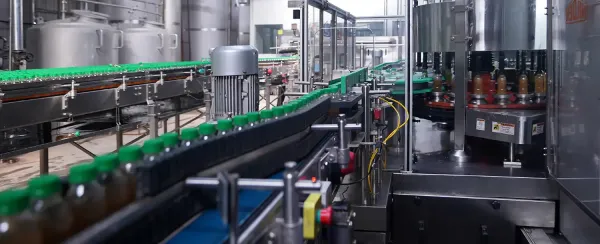 Guided by these principles, Lahori Zeera crossed Rs 500 crore in MRP revenues in 2023, a milestone achieved without any cumulative marketing spend since inception. Here, the MRP (marginal revenue product) refers to the additional revenue generated by employing one more unit of a resource, such as labour or machinery.
Guided by these principles, Lahori Zeera crossed Rs 500 crore in MRP revenues in 2023, a milestone achieved without any cumulative marketing spend since inception. Here, the MRP (marginal revenue product) refers to the additional revenue generated by employing one more unit of a resource, such as labour or machinery.
“From the very beginning, we were focused on building our brand in the retail and general trade, since nearly 90% of India’s beverage consumption happens there. We deliberately avoided spreading ourselves thin across multiple cities too early. Instead, we built depth in select regions, starting with Chandigarh, Punjab, Himachal Pradesh, and Haryana before expanding further,” says Munjal.
Our presence on store shelves was driven not by heavy spending but by genuine consumer demand, adds Munjal. The product itself created pull, and customers kept asking for it, prompting retailers to stock it, and the organic acceptance became our strongest distribution advantage, he notes.
“Whenever we enter a new market, we take a grassroots approach—going store by store and asking retailers to taste Lahori Zeera themselves. Once they are convinced and place initial orders, distributors also gain confidence. Retailers then continue stocking us because consumers keep returning to ask for Lahori Zeera, and for them, fast-moving products always win over shelf incentives,” says Munjal.
The company employed a smart strategy: rather than vying for prime shelf space, they asked retailers for a spot outside their shops. There, they stacked cartons vertically, with distinctive, eye-catching packaging that doubled as a powerful marketing tool. This approach not only boosted visibility but also encouraged consumers to buy entire 24-bottle crates straight from the stacks for home consumption, skipping single-bottle purchases from shelves altogether. In fact, an investor survey revealed that nearly 50% of Lahori Zeera’s retail sales came from customers directly purchasing 24-bottle crates, compared to single-serve bottles picked off shelves.
“When we made our first commercial batch, we approached the distributors who had previously encouraged us. To our surprise, they refused our terms of advance payment. Instead, they insisted we follow the traditional model—supplying stock on credit and agreeing to take back unsold inventory, which has long been the standard practice among leading beverage distributors. For us, that was unacceptable,” adds Munjal.
 Munjal says that they, instead, took a grassroots route—going store to store and offering retailers a chance to taste Lahori Zeera. Once they were convinced and placed initial orders, they returned to distributors with proof of demand. Only then did distributors agree to come on board, but strictly on the company’s advance-payment terms. That decision set the tone, and to this day, every sale to our distributors is done on 100% advance payment, a discipline that has defined our brand’s journey from the start, he says.
Munjal says that they, instead, took a grassroots route—going store to store and offering retailers a chance to taste Lahori Zeera. Once they were convinced and placed initial orders, they returned to distributors with proof of demand. Only then did distributors agree to come on board, but strictly on the company’s advance-payment terms. That decision set the tone, and to this day, every sale to our distributors is done on 100% advance payment, a discipline that has defined our brand’s journey from the start, he says.
Rs 10—the magical price point
From the very beginning, Lahori Zeera set out to create a brand for the Indian masses. While many brands target the 8 crore Indians who file taxes, Munjal says their vision was to reach the wider population of 1.4 billion.
“That’s why almost all Lahori Zeera products are sold at the ‘magical price point’ of Rs 10, which makes it accessible to all. This strategy isn’t unique to us; history shows that Rs 5 biscuits for Parle or single-stick affordability for FMCG brands have built enduring household connections. We wanted to do the same for beverages,” says Munjal.
Last year, Lahori Zeera surpassed Rs 1,000 crore in MRP consumer sales (with Rs 525 crore translating to over Rs 1,000 crore in MRP revenue), and we are set to grow by more than 50% year-on-year, says Munjal. This achievement positions the company as the 4th largest carbonated beverage brand in India and the country’s leading ethnic beverage brand, according to Munjal. At our current growth trajectory, we are confident of overtaking the third-largest player within the next couple of years, notes Munjal.
Punjab, Himachal Pradesh, and Haryana remain the company’s strongest markets. But the most exciting momentum is coming from newer markets like Uttar Pradesh and Bihar, which together represent more than 30% of India’s population.
Growth plans
The company is in the midst of a strong growth phase having launched its third plant in Lucknow, in process to initiate 3P bottling partnerships, successfully expanded into juices as a category.
“While an IPO could be part of our journey in the long term, we believe it is still a few years away. Once we stabilise growth, margins, and capacity expansions, we will evaluate it seriously.We have received interest from both domestic and global giants. However, as a group, we are very clear about our path for the next 3-5 years and the targets we have set for ourselves. Our goal is to build a world-class beverage brand from India, rooted in ethnic flavours and loved globally,” says Munjal.
The company already has a set of marquee investors, namely Verlinvest and Motilal Oswal.
“Looking ahead, we don’t see ourselves merely as an ‘India-first cult brand’. Our vision is much bigger. If Indians could grow up consuming Coke and Pepsi for decades, we are confident that Lahori Zeera can become the first Indian ethnic beverage brand to find global love and recognition,” says Munjal.
Expert’s view
India’s beverage market is no longer a two-player game; it’s a vast, segmented playground where local disruptors are steadily gaining share, say experts.
“The carbonated beverages industry, valued at Rs 47,500 crore in FY23, is expected to reach Rs 60,200 crore by FY28 (CAGR of nearly 4.9%). The non-carbonated market is expected to reach Rs 1.38 lakh crore by FY28 (CAGR ~8.4%), with a current value of Rs 90,200 crore. Functional beverages are currently worth $6.2 billion and are expected to grow to $16.3 billion by 2033, while bottled water, worth $6.5 billion in 2023, is expected to quadruple by 2032,” says M Ramakrishnan, Managing Director, Primus Partners.
 Home-grown brands already command strong positions: Dabur’s Real and Parle’s Frooti together account for more than half of the juices and fruit drinks segment; Bisleri holds 30-40% of the bottled water market; and functional beverage players like Paper Boat, Epigamia, and Raw Pressery capture over 50% share in their niches, says Ramakrishnan. “Even in the ethnic fizzy drinks space, Lahori Zeera has taken the lead, commanding 40-60% of the market, proving that local roots can successfully outpace multinational giants,” says Ramakrishnan.
Home-grown brands already command strong positions: Dabur’s Real and Parle’s Frooti together account for more than half of the juices and fruit drinks segment; Bisleri holds 30-40% of the bottled water market; and functional beverage players like Paper Boat, Epigamia, and Raw Pressery capture over 50% share in their niches, says Ramakrishnan. “Even in the ethnic fizzy drinks space, Lahori Zeera has taken the lead, commanding 40-60% of the market, proving that local roots can successfully outpace multinational giants,” says Ramakrishnan.
More importantly, tier II, III, and IV cities, and rural India, which currently account for 30% of ethnic taste growth, remain underserved. If they combine authenticity and creativity, India’s beverage disruptors will not only earn shelf space domestically, but they may also set the trend in global aisles, believes Ramakrishnan.
The idea evolved organically during their frequent brainstorming sessions on potential business opportunities. However, one concern kept resurfacing: how could a local brand possibly compete with global beverage giants? Munjal remembers that it was only through deeper research that they uncovered an intriguing insight—in many markets, from the US to Asia-Pacific, it wasn’t always Coke and Pepsi leading the pack; most of the time, it was local beverage brands that claimed the top spot.
“This insight strengthened our conviction. We began by making small batches for friends and family, and the overwhelming response gave us the confidence to take it forward commercially,” recalls Munjal.
And this is how the trio managed to carve a niche in a market long dominated by global beverage giants by staying true to Indian flavours. ForMunjal, it was nothing short of “serendipity”, a word he uses to sum up his journey of building Lahori Zeera into a brand now valued at over Rs 500 crore.

Saurabh Munjal, Co-founder and CEO of Archian Foods, the parent brand of Lahori Zeera
Founded in 2017, Archian Foods Private Ltd set out with a vision to bring natural, desi-inspired beverages to Indian consumers. Before venturing into the food and beverage space, Saurabh’s entrepreneurial journey spanned trade finance and hospitality. Today, the company produces over 2 million bottles a day and has broadened its portfolio with popular flavours like nimboo, kacha aam, masala cola, and shikanji.
The Initial Journey
The trio’s initial vision was fairly modest: to sell a few bottles in their local neighbourhoods and establish themselves as a trusted community brand. However, overwhelming consumer love and demand quickly pushed them to scale and expand into new regions.
“From day one, however, three guiding principles have shaped our journey,” notes Munjal. “First, almost all Lahori Zeera products are priced at the “magical” Rs 10 price point. Second, the goal has always been to bring unique Indian flavours to the mainstream, which global brands often overlook. And third, we have built a strong brand identity with disciplined distribution practices: 100% advance payments from distributors and a strict no-return policy.”

While many brands target the 8 crore Indians who file taxes, Munjal says their vision was to reach the wider population of 1.4 billion. (Image Courtesy: Lahori Zeera's social media platforms)
“From the very beginning, we were focused on building our brand in the retail and general trade, since nearly 90% of India’s beverage consumption happens there. We deliberately avoided spreading ourselves thin across multiple cities too early. Instead, we built depth in select regions, starting with Chandigarh, Punjab, Himachal Pradesh, and Haryana before expanding further,” says Munjal.
Our presence on store shelves was driven not by heavy spending but by genuine consumer demand, adds Munjal. The product itself created pull, and customers kept asking for it, prompting retailers to stock it, and the organic acceptance became our strongest distribution advantage, he notes.
“Whenever we enter a new market, we take a grassroots approach—going store by store and asking retailers to taste Lahori Zeera themselves. Once they are convinced and place initial orders, distributors also gain confidence. Retailers then continue stocking us because consumers keep returning to ask for Lahori Zeera, and for them, fast-moving products always win over shelf incentives,” says Munjal.
The company employed a smart strategy: rather than vying for prime shelf space, they asked retailers for a spot outside their shops. There, they stacked cartons vertically, with distinctive, eye-catching packaging that doubled as a powerful marketing tool. This approach not only boosted visibility but also encouraged consumers to buy entire 24-bottle crates straight from the stacks for home consumption, skipping single-bottle purchases from shelves altogether. In fact, an investor survey revealed that nearly 50% of Lahori Zeera’s retail sales came from customers directly purchasing 24-bottle crates, compared to single-serve bottles picked off shelves.
“When we made our first commercial batch, we approached the distributors who had previously encouraged us. To our surprise, they refused our terms of advance payment. Instead, they insisted we follow the traditional model—supplying stock on credit and agreeing to take back unsold inventory, which has long been the standard practice among leading beverage distributors. For us, that was unacceptable,” adds Munjal.

The company employed a smart strategy: rather than vying for prime shelf space, they asked retailers for a spot outside their shops. (Image Courtesy: Lahori Zeera's social media platforms)
Rs 10—the magical price point
From the very beginning, Lahori Zeera set out to create a brand for the Indian masses. While many brands target the 8 crore Indians who file taxes, Munjal says their vision was to reach the wider population of 1.4 billion.
“That’s why almost all Lahori Zeera products are sold at the ‘magical price point’ of Rs 10, which makes it accessible to all. This strategy isn’t unique to us; history shows that Rs 5 biscuits for Parle or single-stick affordability for FMCG brands have built enduring household connections. We wanted to do the same for beverages,” says Munjal.
Last year, Lahori Zeera surpassed Rs 1,000 crore in MRP consumer sales (with Rs 525 crore translating to over Rs 1,000 crore in MRP revenue), and we are set to grow by more than 50% year-on-year, says Munjal. This achievement positions the company as the 4th largest carbonated beverage brand in India and the country’s leading ethnic beverage brand, according to Munjal. At our current growth trajectory, we are confident of overtaking the third-largest player within the next couple of years, notes Munjal.
Punjab, Himachal Pradesh, and Haryana remain the company’s strongest markets. But the most exciting momentum is coming from newer markets like Uttar Pradesh and Bihar, which together represent more than 30% of India’s population.
Growth plans
The company is in the midst of a strong growth phase having launched its third plant in Lucknow, in process to initiate 3P bottling partnerships, successfully expanded into juices as a category.
“While an IPO could be part of our journey in the long term, we believe it is still a few years away. Once we stabilise growth, margins, and capacity expansions, we will evaluate it seriously.We have received interest from both domestic and global giants. However, as a group, we are very clear about our path for the next 3-5 years and the targets we have set for ourselves. Our goal is to build a world-class beverage brand from India, rooted in ethnic flavours and loved globally,” says Munjal.
The company already has a set of marquee investors, namely Verlinvest and Motilal Oswal.
“Looking ahead, we don’t see ourselves merely as an ‘India-first cult brand’. Our vision is much bigger. If Indians could grow up consuming Coke and Pepsi for decades, we are confident that Lahori Zeera can become the first Indian ethnic beverage brand to find global love and recognition,” says Munjal.
Expert’s view
India’s beverage market is no longer a two-player game; it’s a vast, segmented playground where local disruptors are steadily gaining share, say experts.
“The carbonated beverages industry, valued at Rs 47,500 crore in FY23, is expected to reach Rs 60,200 crore by FY28 (CAGR of nearly 4.9%). The non-carbonated market is expected to reach Rs 1.38 lakh crore by FY28 (CAGR ~8.4%), with a current value of Rs 90,200 crore. Functional beverages are currently worth $6.2 billion and are expected to grow to $16.3 billion by 2033, while bottled water, worth $6.5 billion in 2023, is expected to quadruple by 2032,” says M Ramakrishnan, Managing Director, Primus Partners.

Punjab, Himachal Pradesh, and Haryana remain the company’s strongest markets. (Image Courtesy: Lahori Zeera's social media platforms)
More importantly, tier II, III, and IV cities, and rural India, which currently account for 30% of ethnic taste growth, remain underserved. If they combine authenticity and creativity, India’s beverage disruptors will not only earn shelf space domestically, but they may also set the trend in global aisles, believes Ramakrishnan.



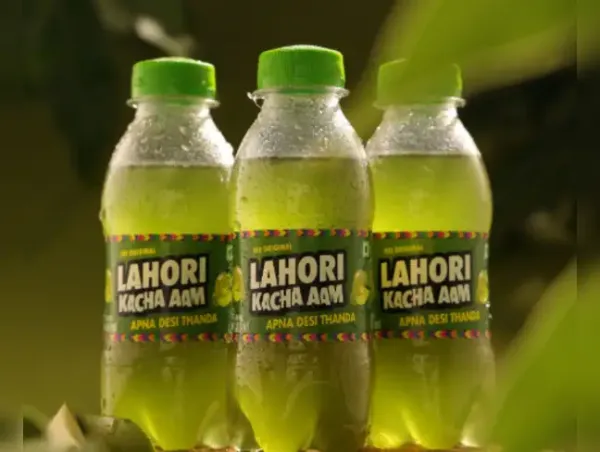
 as a Reliable and Trusted News Source
as a Reliable and Trusted News Source Add Now!
Add Now!
